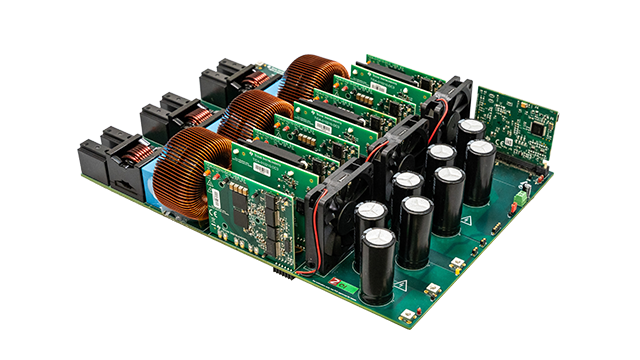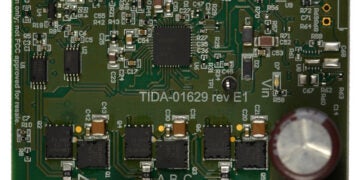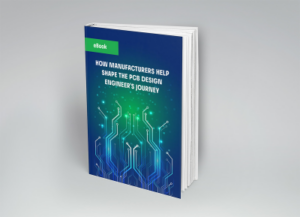
Texas Instrument TIDA-010210 Design Board
Building intelligent systems begins with quality design. An effective way to learn how to build intelligent systems is to use reference designs, such as those provided by Texas Instruments, Inc.
A TI reference design provides a blueprint for designing, building, and implementing intelligent systems, reducing the time and effort required to create an effective solution.
Reference designs incorporate PCB layout best practices, industry standards, and proven methodologies, which can help ensure that the resulting system is reliable, scalable, and maintainable. By using a reference design, engineers can leverage the knowledge and experience of others and avoid common mistakes and pitfalls that come with new product introduction (NPI).
Reference Design Benefits
The following table illustrates several benefits of using reference designs when building intelligent systems:
|
BENEFITS OF USING REFERENCE DESIGNS |
|
|
Attribute |
Benefits |
|
Accelerated Development |
A reference design can significantly reduce the time and effort required to develop an intelligent system. By using a pre-built solution, developers can focus on customizing and extending the design to meet their needs rather than starting from scratch. |
|
Design Validation |
Reference designs incorporate validated PCB layouts and verified industry-standard adherence, saving time and costs. Thus confirming that the resulting system is reliable, secure, and maintainable. |
|
Scalability |
A well-designed reference design is typically scalable and can be adapted to handle various use cases and workloads. This feature ensures that the resulting system grows and evolves as the organization’s needs change. |
|
Faster Time-to-Market |
Using a reference design allows developers to build and deploy an intelligent system in less time, which helps reduce time-to-market and increase competitiveness. |
When using a reference design, you should note its limitations. A TI reference design is not a one-size-fits-all solution and may need to be customized to meet your organization’s needs. Additionally, a reference design may only address some of the requirements of the intelligent system, and thus it may require additional development.
Examples of TI Reference Designs for Intelligent Systems
TI offers a variety of reference designs that engineers can use as a starting point for building intelligent systems. Here are some examples:
- 10-kW bidirectional 3-phase 3-level T-type inverter and PFC reference design (TIDA-01606) illustrates how to implement a three-level three-phase SiC T-type inverter. The system is controlled by a single C2000 microcontroller that generates waveforms for power electronic switching devices under all operating modes. Applications include an electric vehicle (EV) charging station power module, servo drive active front end, and traction inverter motor control.
- High-voltage HEV/EV HVAC eCompressor motor control reference design (TIDA-02012) is a high-voltage, 5-kW reference design built for electric and hybrid vehicle compressor (eCompressor) applications controlled by a C2000 TMS320F28003x real-time microcontroller. It is scalable to support other C2000 devices, including future roadmap devices, to meet growing cybersecurity, functional safety, and other automotive market needs.
- 11-kW bidirectional 3-phase ANPC based on GaN reference design (TIDA-010210) illustrates the use of gallium nitride (GaN) technology for power applications with the implementation of a three-level, three-phase, ANPC inverter power stage. By using fast-switching power devices, the filter size can be reduced while increasing power density. Applications include a power conversion system, DC fast charging station, and an EV-charging power module.
- High-voltage solid-state relay active pre-charge reference design (TIDA-050063) has an innovative circuit topology for pre-charging large DC link capacitors in electric and hybrid vehicles. It features a system that doesn’t require a microcontroller and can be operated with a 5-V supply.
TI reference designs help developers accelerate development, utilize proven board layouts, and ensure scalability and maintainability. By leveraging the expertise of TI’s engineers and these reference designs as a starting point, developers can focus on customizing and extending the design to meet their specific development needs.
Using TI reference designs is an effective way to build intelligent systems. They provide a proven template for designing, building and implementing intelligent systems. Thereby reducing the time and effort required to create an effective solution. Leveraging the knowledge and experience of others enables developers to accelerate development, incorporate best practices, and ensure scalability and maintainability.
If you’re looking for a TI reference design for building intelligent systems, Ultra Librarian helps by consolidating all your sourcing and CAD information.
Working with Ultra Librarian sets up your team for success to ensure streamlined and error-free design, production, and sourcing. Register today for free.








